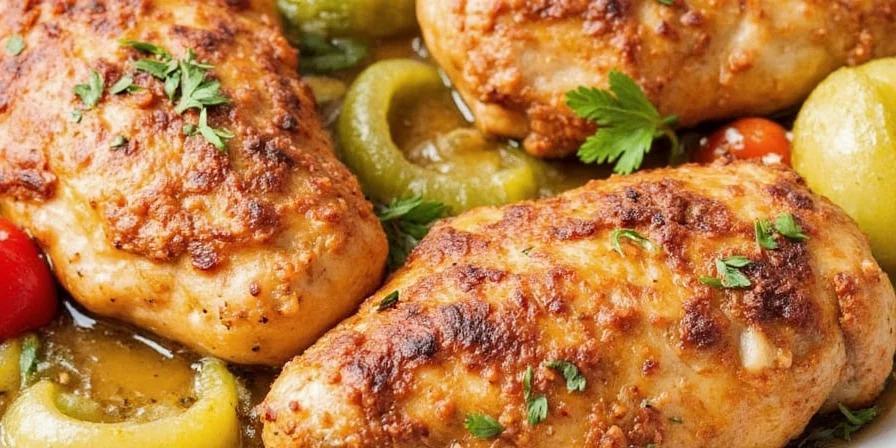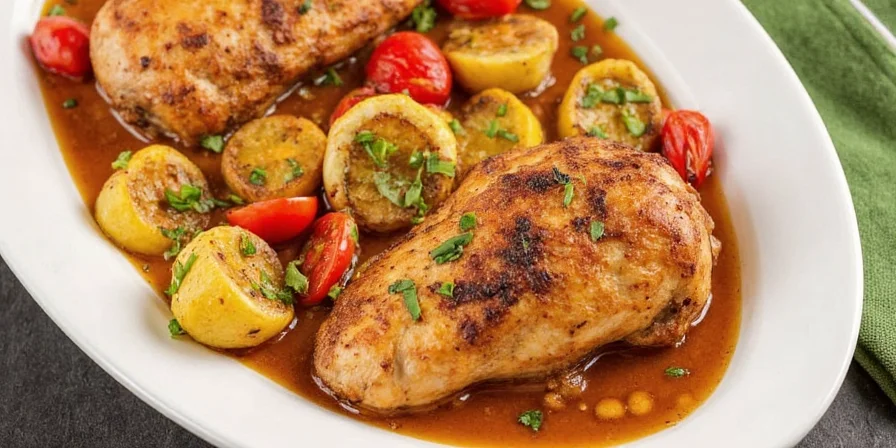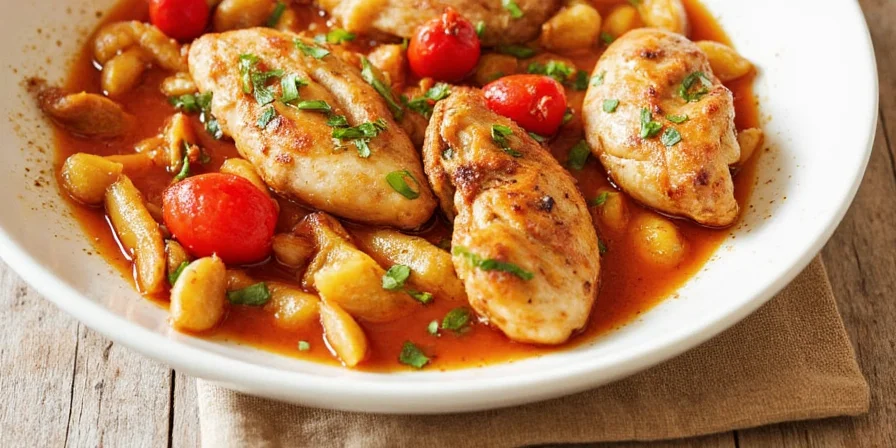Provencal Chicken: The Flavor-Packed Dish That Brings Provence to Your Plate
Table of Contents
- Introduction: What is Provencal Chicken?
- The Spice Lineup: Who’s in the Provencal Flavor Squad?
- Top 5 Tips for Mastering Provencal Chicken at Home
- Cooking Techniques: From Pan-Seared to Oven-Baked Magic
- Wine, Sides & More: How to Serve Like a Local
- A Dash of History: The Roots of This Regional Star
- Spice Up Your Life: Global Variations Inspired by Provençal Chicken
- Conclusion: Why This Chicken Deserves a Standing Ovation
Introduction: What is Provencal Chicken?
If French cuisine were a music festival, Provencal chicken would be the headliner. Bursting with herbs and kissed by the Mediterranean sun, this dish brings the rustic charm of southern France straight to your kitchen.
Born in the sun-drenched hills of Provence, this dish is less about precision and more about vibe. Think olive oil, garlic, tomatoes, olives, and the holy trinity of Provençal spices: rosemary, thyme, and oregano. It’s like a picnic under lavender skies — in plate form.

The Spice Lineup: Who’s in the Provencal Flavor Squad?
Let’s give it up for the rock stars of this dish:
- Rosemary – The bossy older sibling who insists on perfection
- Thyme – The quiet genius that makes everything better
- Oregano – The Italian cousin who adds serious depth
- Fennel Seeds – For that subtle licorice note that says “I know things”
- Garlic – Because duh
- Paprika – Optional but welcome for color and warmth
Comparison Table: Dried vs. Fresh Herbs in Provencal Chicken
| Characteristic | Dried Herbs | Fresh Herbs |
|---|---|---|
| Flavor Intensity | Stronger, more concentrated | Milder, more aromatic |
| Best Use | Cooking into sauces or braises | Finishing touches or lighter dishes |
| Shelf Life | Months to years | Days to a week |
| Ease of Access | Always available | Seasonal and location-dependent |

Top 5 Tips for Mastering Provencal Chicken at Home
- Use quality ingredients: If your chicken looks sad, it will make you sad. Invest in free-range or organic birds if possible.
- Don’t skip the sear: A golden crust equals flavor city. Heat your pan until it sings (or just sizzles when water hits it).
- Bold seasoning: Season early and season often. Salt loves chicken, and chicken loves salt. It’s a match made in heaven.
- Layer flavors: Don’t throw all the spices in at once. Start with aromatics (onion, garlic), add dried herbs early, and finish with fresh herbs later for maximum impact.
- Sous-vide shortcut: Want tender, juicy chicken every time? Brine or sous-vide the meat before searing. Trust us, it’s worth the extra step.
Cooking Techniques: From Pan-Seared to Oven-Baked Magic
You can cook Provencal chicken in multiple ways — here's what works best:
- Stovetop Sear + Finish in Oven: Perfect for crispy skin and even cooking
- Slow Braise: Ideal for tougher cuts like thighs and legs; infuses deep flavor
- Grill Time: Take it outside! Char-grilled chicken with herb butter = summer dreams come true
- One-Pan Wonder: Throw everything into one tray and roast to glory. Easy cleanup? Yes please.
Pro tip: If using a cast iron skillet, don’t wash it with soap afterward — just wipe, heat dry, and oil lightly. That patina is your new best friend.
Wine, Sides & More: How to Serve Like a Local
Pairing ideas that scream southern France:
- Red Wine: Châteauneuf-du-Pape or Gigondas
- White Wine: Domaine Tempier Rosé (dry and crisp)
- Sides: Ratatouille, saffron rice, crusty baguette, roasted cherry tomatoes
- Cheese: Goats cheese from the Luberon region
Want to really impress? Try serving your Provencal chicken over polenta or with a side of haricot verts dressed in vinaigrette.
A Dash of History: The Roots of This Regional Star
Provencal cuisine is a blend of French tradition and Mediterranean influence. With roots in ancient Rome and Arab trade routes, Provence became a spice hub long before it was cool.
Chickens were farmed locally, and spices were grown in abundance. As trade expanded, exotic additions like cinnamon and nutmeg sometimes found their way into stews — though traditionalists still keep it simple.
The modern version we know today gained popularity in the 20th century, thanks to chefs like Paul Bocuse and Julia Child, who brought French home cooking into the spotlight.
Spice Up Your Life: Global Variations Inspired by Provençal Chicken
While the classic remains timeless, here are fun global spins:
- Turkey Twist: Substitute chicken with turkey and add pomegranate molasses for a Middle Eastern flair
- Coconut Cream Curry: Swap out tomatoes for coconut milk and add lemongrass for a Thai twist
- Mexican Herb Blend: Use epazote, cumin, and smoked paprika instead of thyme and rosemary
- Japanese Infusion: Add shiso leaves, yuzu zest, and miso glaze for an umami-packed East-West fusion
Adaptability is the key to culinary evolution. Don’t be afraid to play around!
Conclusion: Why This Chicken Deserves a Standing Ovation
Whether you're cooking for two or hosting a dinner party, Provencal chicken is your ticket to a flavorful, comforting meal with a touch of sophistication.
It’s versatile, easy to customize, and packed with history and heart. And let’s be real — any dish that tastes this good and comes with a wine pairing should be celebrated regularly.
So next time you’re craving something hearty yet light, rustic yet refined, reach for those herbs and say oui to Provencal chicken.











 浙公网安备
33010002000092号
浙公网安备
33010002000092号 浙B2-20120091-4
浙B2-20120091-4